On December 8, 2004 the M/V Selendang Ayu, a Malaysian bulk carrier, ran aground off the coast of Unalaska Island in western Alaska’s Aleutian Islands. The grounding caused the ship to break in half and resulted in an oil spill of approximately 336,000 gallons of fuel oil and diesel fuel that led to an environmental cleanup lasting until June 2006. During the rescue operations a coast guard helicopter crashed and six of the vessel’s crew died just moments after being rescued, while the last persons onboard the ship, the master and a rescuer, watched a few minutes later the ship breaking in half.
The ship encountered heavy weather during most of her voyage after leaving the port on 28 November, loaded with soybeans. Once through the Straits of Juan de Fuca, the vessel set a westerly course toward Unimak Pass in the Aleutian Islands. In order to navigate through the heavy weather the ship maintained high speed while the engine watch was monitoring the turbocharger which should not exceed 12,000 to 12,500 revolutions per minute.
On Monday December 6 1200 (1000 by the Selendang Ayu’s clock 6), the fourth engineer, who was standing watch in the engineroom, reported to the chief engineer and the second engineer in the control room that a jet of water was coming out from the main engine’s No. 3 cylinder. The second engineer immediately instructed the fourth engineer to shut down the evaporator and went below. According to the fourth engineer, when the second engineer returned from the engine room, he said he was going to shut down the main engine. The fourth engineer said that by the time he had secured the evaporator, the main engine had stopped (Securing the evaporator is a step in the sequence of a controlled main engine shutdown. The evaporator uses the heat generated by the main engine to turn seawater into fresh water for use on the ship). At the time of the engine failure the weather was less severe than what the vessel had experienced since leaving Seattle. The chief engineer informed the Master that the liner in cylinder 3 was cracked, the master confirmed his vessel’s position and its distance from Dutch Harbor, the closest port of refuge.
From about 1230 to 1545 on December 6, the senior engineering staff and master assessed the engine. They decided to isolate the No. 3 cylinder (disconnect air, fuel, and cooling water from the cylinder), according to instructions in the manufacturer’s manual, then restart the engine (which could operate on fewer than all six cylinders), proceed at reduced speed to safe anchorage in Dutch Harbor, and repair the No. 3 cylinder. In accordance with the company’s safety management procedures,9 they notified the company’s vessel technical superintendent in Singapore about the problem and their plan of action. The master told the superintendent that the vessel was not in imminent danger or close to land. The superintendent agreed with the proposed action.
Despite the crew’s continuous efforts to restart the main engine all attempts were unsuccessful. At 2330 on December 6, the chief engineer called the technical superintendent again and informed him of the continuing problems with restarting the engine. The superintendent instructed the chief engineer to e-mail him the steps taken to isolate cylinder 3 in order to forward them to the manufacturer so as to suggest any possible alternatives. The manufacturer’s representative suggested in response that the crew try isolating the No. 3 cylinder using a different method, then try again to restart the engine.
At 0245 on Tuesday, December 7, the Selendang Ayu master called the harbormaster in Dutch Harbor using the vessel’s satellite telephone. The harbormaster contacted the Coast Guard in Dutch Harbor, which sent notification of the situation to the Coast Guard Marine Safety Office in Anchorage and the Coast Guard District 17 command center in Juneau.
At 0555 on December 7, the engine crew after opening the scavenging doors reported that all but two of the cylinders had broken rings. In consultation with the company superintendent and the engine manufacturer’s representative the chief engineer was instructed to change the rings in the No. 6 cylinder, which was determined to be in the worst condition. According to the company superintendent the “root cause” of the engine’s failure to restart was the lack of compression.
On December 7, at 0900, the Selendang Ayu’s engineering crew began changing the No. 6 cylinder rings. The engineering crew and the master had now been up for about 24 hours.
By 1330, the Selendang Ayu’s No. 6 cylinder head—which weighed 3,306 pounds and was 23.5 inches in diameter and 11 feet long (with rod attached)—had been removed and was lashed to the deck. The chief engineer stopped the engine work because of the danger to the crew posed by the vessel’s rolling in the rough seas. For the next 18 hours, no further work was attempted on the freighter’s engine. Hourly reports on the vessel’s status went by e-mail from the Selendang Ayu to the management company in Singapore.
At 1630, Coast Guard District 17 directed the Alex Haley to take the disabled freighter in tow and slow its drift.
At 1730, the Alex Haley contacted the tug Sidney Foss on radar and by radio. At 1745, the Sidney Foss established communications with the Selendang Ayu and discussed towing plans.
At 1930, according to the tugboat master, as the Selendang Ayu’s crew made its way to the bow, the freighter’s decks were awash and “the ship was rolling 25 to 35 degrees.”
The crew hauled in the messenger until they could attach the eye of the towline over a set of bitts18 on the Selendang Ayu’s bow. The towline was then connected to a 2-inch wire on the tug’s towing-winch drum. At 2004, the eye was secure on the bitts and the tug master paid out 1,900 feet of wire for the tow. The wire was connected to 600 feet of 9-inch synthetic-line hawser and then to the bow of the Selendang Ayu. At 2020, the Sidney Foss began the tow.
By 2400, the senior engineering staff and the master had now been awake for about 41 hours.
The Sidney Foss attempted to tow the Selendang Ayu to the northwest, but the wind, seas, and swell pushed both vessels to the east-southeast at approximately 1.5 knots.
At 0732 the morning of Wednesday, December 8, the Sidney Foss master notified the Selendang Ayu and the Alex Haley that his towline had parted. By 0853, the Sidney Foss had recovered what remained of its towline. The sea state prevented the Sidney Foss from attempting to put another line on the freighter.
At 0945, the Coast Guard directed the Selendang Ayu to transfer all its fuel to the inboard tanks and secure the fuel oil heaters, to reduce the danger of a spill if the ship grounded.
At 1040, the Alex Haley recommended that the Selendang Ayu Master drop anchor. The vessel was now drifting over the 50-fathom (300-foot, 91 m) curve, where the anchor might find a purchase and arrest the vessel’s drift toward the coast. At 1115, the Selendang Ayu master radioed the Alex Haley that he had the port anchor down with 10 shackles (900 feet, 274 m) on the anchor winch. From then until approximately 1200, the freighter slowed almost to a stop, and it appeared that the anchor was holding. The freighter’s heading had swung from northeasterly to westerly.
Shortly before 1130, the Selendang Ayu master reported that his anchor was dragging, and the vessel resumed drifting to the southeast at about 2.0 knots. The Coast Guard recommended dropping the starboard anchor, but the Selendang Ayu master said the starboard anchor might foul on the port anchor’s chain. The port chain was tight around the vessel’s stem (forwardmost part of the bow) and leading to the north (refer to figure below).
About 1300, the weather worsened to Beaufort force 9. The Alex Haley commanding officer said that he would try to tow the freighter’s bow into the wind so the anchor could be dropped. The Coast Guard commanding officer estimated that some of the seas through which they were attempting to pass the line were at least 35 feet high (the height of eye on the Alex Haley’s bridge). The distance between the vessels did not allow enough slack for the Selendang Ayu crew to pull in the messenger. At 1342, with the tension increased, the messenger line parted. When the Alex Haley bridge received word that the line had parted, the commanding officer ordered the remaining line on the stern to be cut away so it would not foul the propellers.
The Coast Guard now turned its attention to evacuating the crew. Radio calls between the Alex Haley and the Selendang Ayu master document the Coast Guard’s desire to start removing crewmembers and the master’s desire to keep enough crewmembers on board to deal with the emergency. Because of the diminishing light. The master finally allowed a group of 18 crewmembers to depart, those he considered the least essential for dealing with the emergency.
About 1400, the Coast Guard began hoisting the first group of nine Selendang Ayu crewmembers, wearing lifejackets,24 from the deck of the freighter into the first HH-60 helicopter that had arrived from Cold Bay. At 1430, the second HH-60 helicopter arrived on scene.
At 1431, the Selendang Ayu master lowered his starboard anchor. The anchor held with 10 shots on the winch. The Alex Haley’s deck log reports that at 1450, the vessel was about 1 mile from the beach, holding to two anchors with 10 shots of chain on each.
At 1450, the first HH-60 helicopter completed its hoist and flew the nine Selendang Ayu crewmembers to the Alex Haley. Hovering above the cutter’s deck, the helicopter lowered the crewmembers one at a time in a basket.
Eight crewmembers remained on board the Selendang Ayu. Seven were the freighter’s most senior and experienced personnel; the eighth was a deck cadet who remained on board out of loyalty to the master and who stated that he was confident in the successful outcome of the situation.
Between 1500 and 1700, the crew remaining on the Selendang Ayu attempted to finish the engine repairs, while the master was monitoring the bridge, communicating by radio with the Coast Guard, and sending updates to his management office in Singapore. During that time, the Alex Haley informed the master of the Selendang Ayu that his anchors appeared to be dragging.
About 1700, the commanding officer of the Alex Haley called the master to remind him that the Coast Guard wanted to remove his remaining personnel from the freighter before sunset (which would occur at 1749). He told the master that the helicopter would take 30 minutes to arrive. The master then asked the chief engineer how much longer the repairs would take. The chief engineer told him 10 to 15 minutes. As the master made his way topside to inform the Alex Haley, he felt the first of several shudders and realized that the vessel had run aground. The master noted the time of the grounding as 1705. Coast Guard logs indicate notification by the vessel at 1715.
When the Selendang Ayu master felt the ship hit bottom, he told the chief engineer to stop work and get everyone out. He then radioed the Alex Haley and requested immediate helicopter evacuation. Wearing lifejackets, the eight remaining crewmembers on the grounded freighter assembled on the port bow, where the two previous evacuations had taken place.
The HH-60 lowered a rescue swimmer to help the crewmembers into the basket that would hoist them into the helicopter. At 1816, after the seventh crewmember had been hoisted on board the helicopter and while the Selendang Ayu master and the Coast Guard rescue swimmer waited on the freighter’s exposed bow, a wave larger than any yet encountered, according to witnesses, struck the bow of the freighter, sprayed up, and engulfed the HH-60. The helicopter’s engines stalled, the helicopter descended, and its tail and main rotor blades struck the side of the Selendang Ayu. The helicopter then fell into the sea close to the freighter’s forward port side, overturned, and sank.
The HH-65 Dolphin helicopter from the Alex Haley had been hovering nearby observing the rescue effort when it witnessed the wave and the crash of the HH-60 Jayhawk. The HH-65 Dolphin immediately went into rescue mode. By 1836, the HH-65 had recovered all three of the Jayhawk’s crew from the water but only one of the Selendang Ayu’s seven crewmembers. With no other signs of survivors in the water, the HH-65 helicopter flew to Dutch Harbor to get medical attention for those rescued.
At 1913, with the master of the Selendang Ayu and Coast Guard rescue swimmer still awaiting rescue, the freighter broke in half on the rocks. At 2035, the Alex Haley’s HH-65 Dolphin helicopter returned and rescued the master and the Coast Guard swimmer. After sweeping the shoreline for survivors, the Dolphin flew back to Dutch Harbor, where the Selendang Ayu master and the rescue swimmer were treated for exposure. On December 11, the Alex Haley docked in Dutch Harbor, bringing with it the nine Selendang Ayu crewmembers who had been rescued in the first helicopter evacuation.
The chief engineer of the Selendang Ayu, the second engineer, the chief electrician, the chief mate, the third officer, and the bosun died in the accident. None of their bodies was recovered and they are presumed drowned. The accident resulted in a spill of approximately 336,000 gallons of fuel oil and diesel fuel that led to an environmental cleanup lasting until June 2006.
None of the Selendang Ayu crewmembers wore an immersion suit. At the time of the accident, the International Convention for Safety of Life at Sea (SOLAS), chapter 3, regulation 32 (“Personal life-saving appliances”), required a cargo vessel to carry at least three immersion suits for each lifeboat, unless the vessel had a totally enclosed lifeboat on each side. After the accident, the company outfitted all its vessels with immersion suits for all crewmembers. In an amendment effective July 1, 2006, the SOLAS regulation was changed to require one immersion suit for each person on board a cargo ship. An exemption from this requirement for ships that voyage “constantly” in warm climates is not allowed for bulk carriers.
Sources: Alaska Department of Environmental Conservation, NTSB







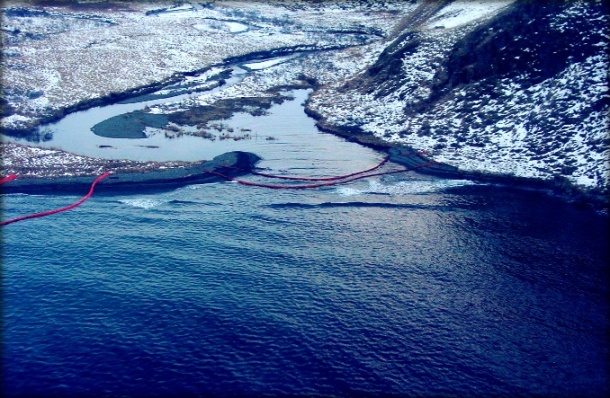
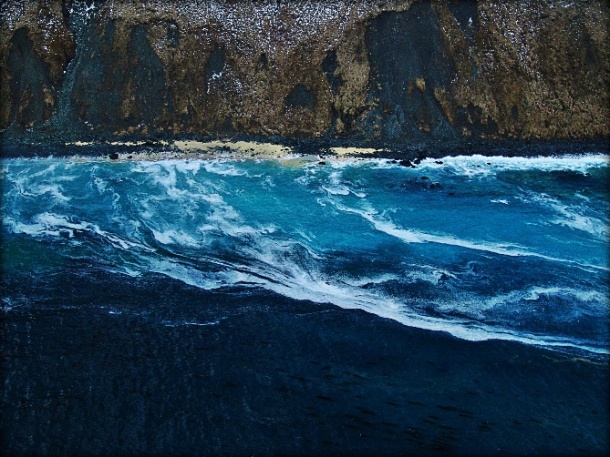







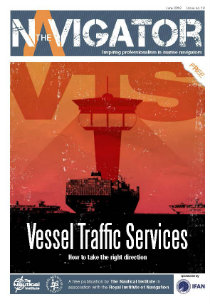
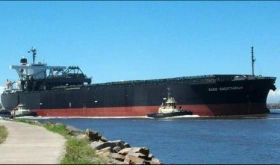

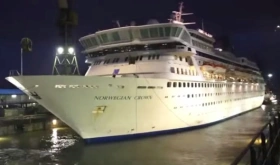

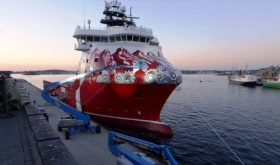
[…] in the ongoing risk assessment for the Unimak Pass region which began after another ship – the Selendang Ayu – grounded resulting in the death of six of the ship’s crew and a 336,000 gallon oil […]